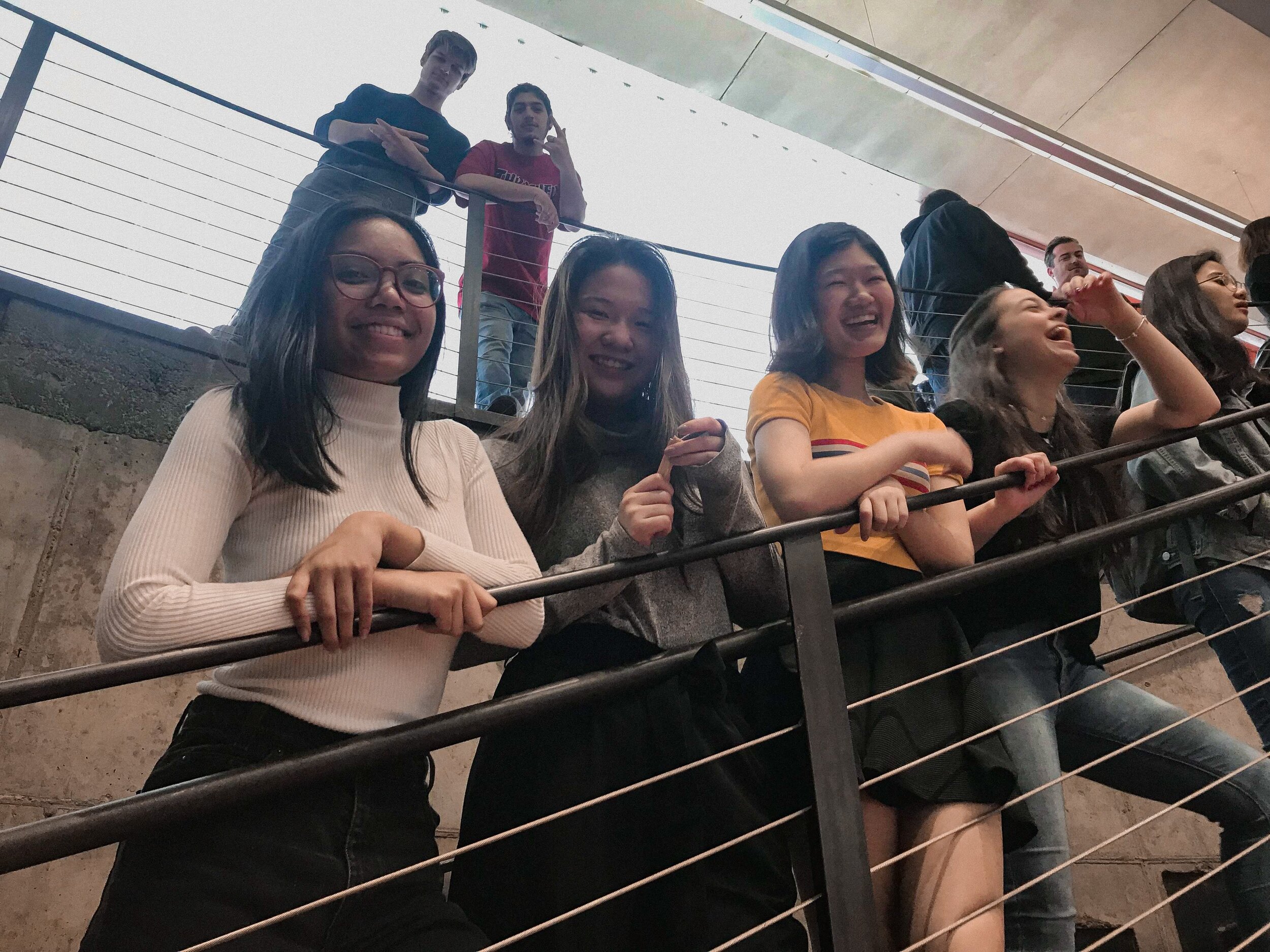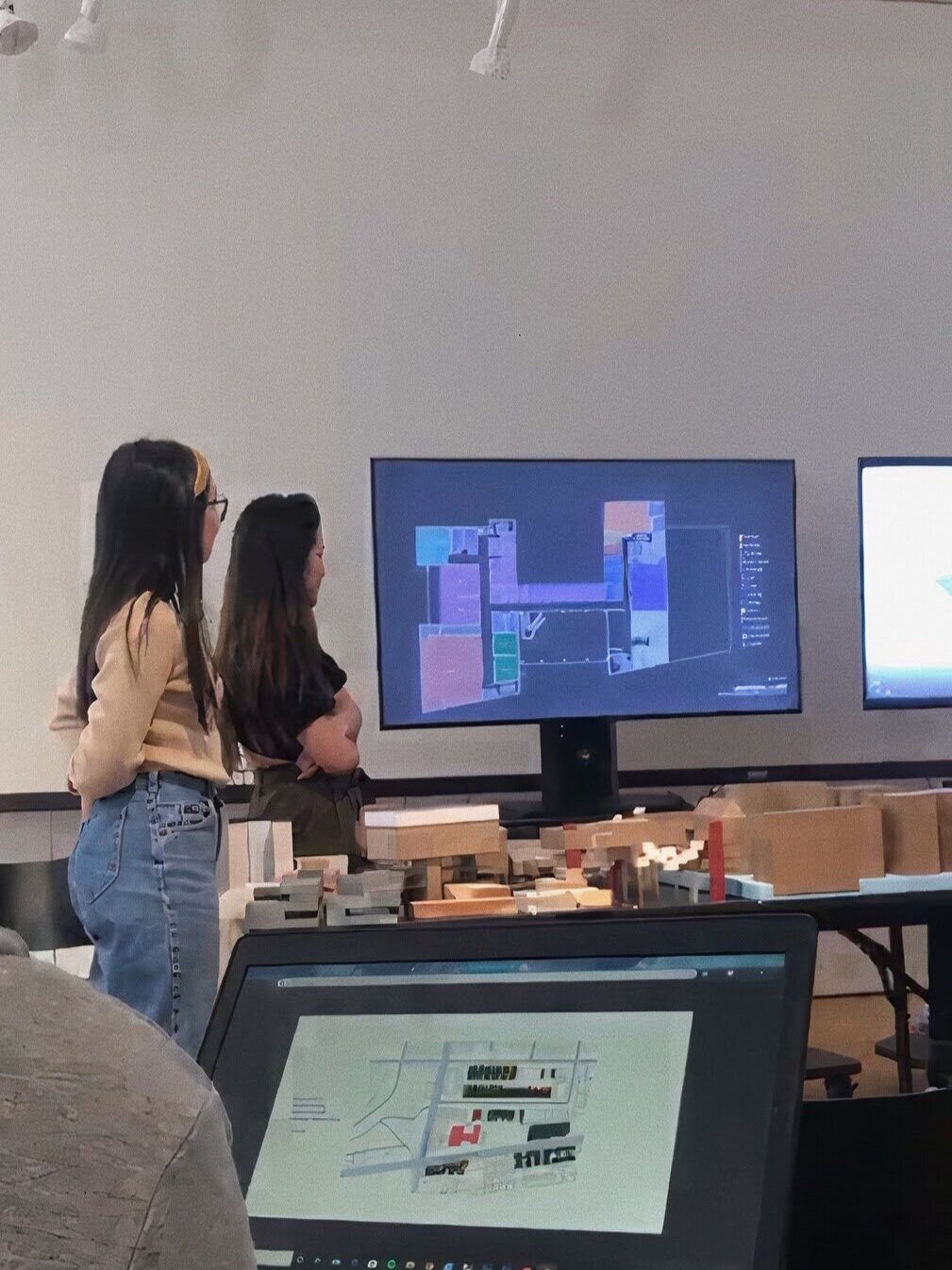JACQUELINE LAI
Portrait courtesy of Jacqueline Lai.
Bachelor in Architectural Science at Pratt Institute, School of Architecture
Jacqueline Lai is a third-year student studying at Pratt Institute’s School of Architecture. Born and raised in New York, she has always been surrounded and fascinated by the built environment in an ever-changing world. She believes that architecture is integrated with our day to day lives and can serve as a powerful tool for social change.
Throughout her education, Jacqueline has sought out opportunities that would allow her to immerse herself in the field of design. Taking architecture courses and joining clubs/programs such as SkillsUSA and ACE Mentor in high school have provided valuable lessons and eye-opening experiences that she hopes to bring into her future work.
Using Architecture as a Medium for Expression
What inspired you to pursue architecture?
While architecture has always been a part of my life, as I grew up exploring different opportunities that introduced me to design and had my family (most of which work within the field) encourage me to study it as well, I can’t say that it was one of my biggest pursuits. Given my growing interest, I decided to major in the field following the experiences I gained throughout high school and I believe that architecture school is what really helped to spark my enthusiasm for architecture. Studying architecture shifted my motive behind pursuing architecture from wanting to let my creative aspirations out into the built landscape to rather focusing on how architecture can address and impact our world not just environmentally, but socially. Architecture, like other forms of art, can perform as an unspoken connection between different cultures/identities and ultimately affects the world we live in. As humans, we are affected by our society as well as the landscapes that surround us, so I believe there is an importance for architects to take this relationship into consideration and develop a synergy with social change in design.
Working on a full-scale intervention project with teammates, Spring 2019, Pratt Institute Photo courtesy of Jacqueline Lai.
What is the most important thing that you learned in the past year?
There were a plethora of things I’ve learned over the past year, but I believe that maintaining perseverance and determination is a lesson that I have found really valuable and held onto. Despite the numerous times this past year where situations got difficult and the future that lied ahead seemed unclear, seeing how others have handled both issues that have long needed to be addressed as well as unprecedented situations that have affected us globally was really enlightening. Through the events that have taken place this year, it really dawned on me how important it is to have a voice that is heard. Especially in today’s society, where people are more vocal about issues that need to be addressed, it is evident that speaking up can ultimately lead to action, if not at least garner awareness. Drawing back to my own position in this field, I believe architecture can serve as a voice as well, as what we build draws relationships between people and the world we live in by telling stories through their designs and context.
With Studio mates at Higgins Hall, Pratt Institute. Photo courtesy of Jacqueline Lai.
What are some architectural organizations (or specific person/role model) that helped you learn to overcome an obstacle? How did they?
Recently, Pascale Sablan, president-elect of NOMA (National Organization of Minority Architects), gave an amazing lecture for Pratt Institute which I found to be incredibly eye opening and inspiring. She made clear of the demographics within the field and how there is a lack of inclusivity for women and BIPOC. Pascale is also the founder of Beyond the Built Environment, LLC, which seeks to dismantle injustice through the SAY IT LOUD project and exhibitions. Seeing her work and how she, a Pratt alumnus, has used her education and career to develop a platform for advocacy in architecture truly motivates me in what I want to pursue in the future. Knowing that despite the current lack of representation in the field, the ability to use architecture as a medium for activism for women and people of color helps me to realize my own potential.
Interior views of civic film center proposal as an extension to the Harlem School of Arts; Spring 2020, Pratt Institute. Photo courtesy of Jacqueline Lai.
If you were given the opportunity to repeat the year, what is one thing you’d do differently?
Given the unforeseen events that have unfolded this past year, there were definitely a lot of lessons to be learned and experiences to be had. Looking back, if I were to repeat this year, I think it would be extremely helpful to expose myself to different ways of doing things and try to find ways to make use of time more effectively during the situation we were put in. As a collective, this pandemic has changed the way we lived and there were a lot of changes that happened quickly that took some adapting to. Personally, having my very much hands-on education experience get cut off and switched to a remote course of learning was a bit jarring and even to this day, I’m still getting used to it. Granted, the circumstances have resulted in establishing a new “normalcy”, but despite these limitations, I still think there is a lot of potential for us to make the best of the situation.
Current project: developing a live-work facility for artists located in Vinegar Hill, Brooklyn, NY. Work by Jacqueline Lai and Denica Zeng, Fall 2020, Pratt Institute. Photo courtesy of Jacqueline Lai.
As you reflect on the past year, what did you discover as your biggest strengths?
I think the ability to not lose hope during difficult times and rather push ahead to do better is an attribute that has helped me get through this year. There were many long moments this year in which I felt lost or disappointed with myself for failing to accomplish things the way I had hoped. However, coming to terms that there were circumstances that were out of my control and not losing faith in myself helped me a lot in getting through these tough times.
“Athenaeum in the Abyss” proposal for an underground library and theater; Fall 2019, Pratt Institute. Photo courtesy of Jacqueline Lai.
In terms of rising concerns and problems (in the architectural profession) over the past year, what is one change that you wished would happen and it did not? This can be in an educational or work atmosphere.
There are a multitude of topics that I think need to be addressed in this field, especially in regard to diversity and inclusivity, but I hope that we can begin by recognizing the lack of these aspects. I believe a vital change comes in modifying educational curriculums to take these prevalent issues into consideration, and I feel that there is still a lack of representation of such social concerns currently.
Presenting with partner Paula DeAlday, Spring 2020, Pratt Institute. Photo courtesy of Jacqueline Lai.











